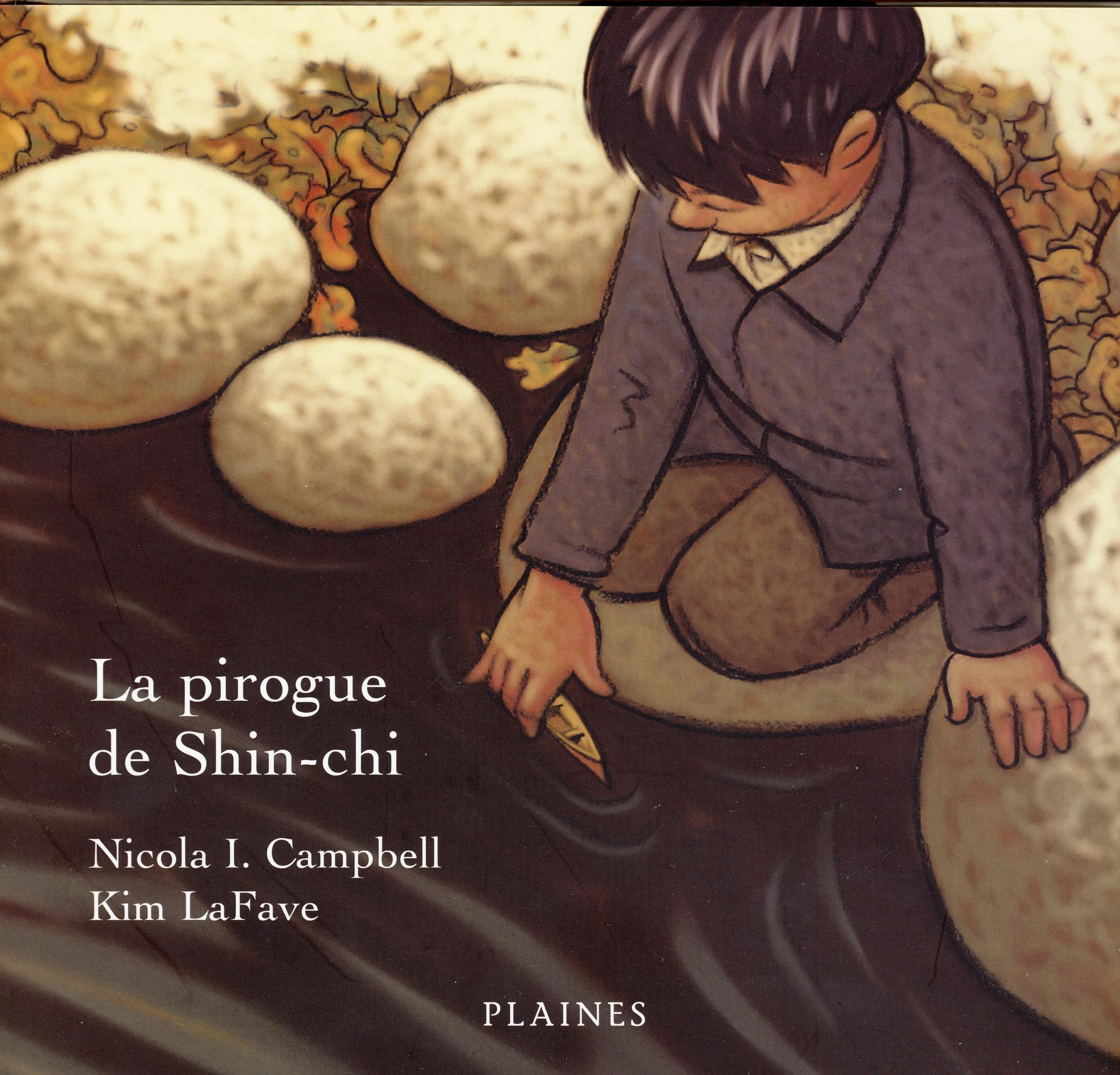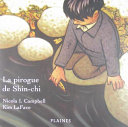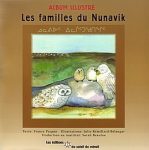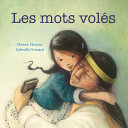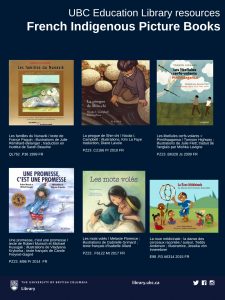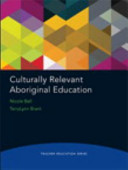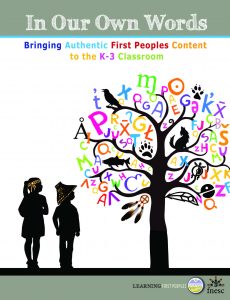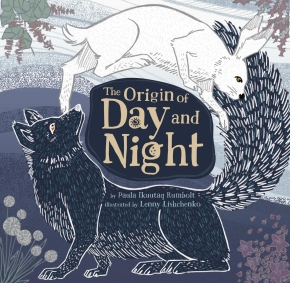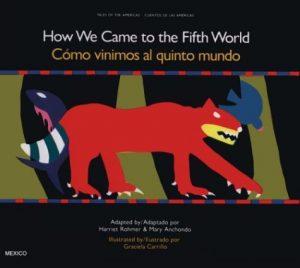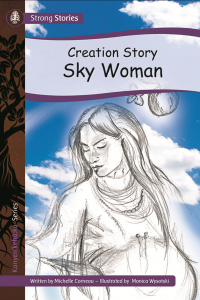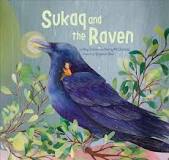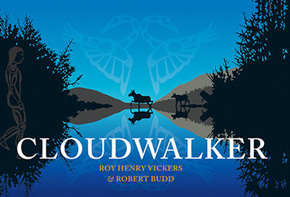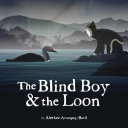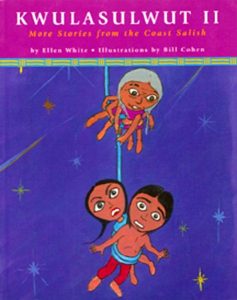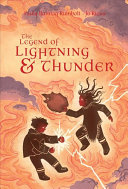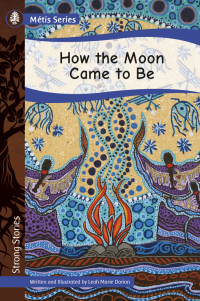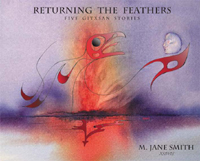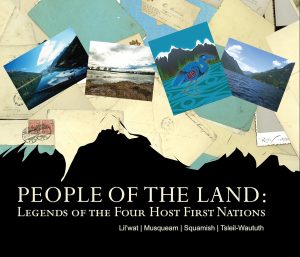Below are a number of picture books by Indigenous writers and illustrators that are primarily in French.
Vous trouverez ci-dessous un certain nombre de livres d’images d’auteurs et d’illustrateurs autochtones, principalement en français.
texte de Nicola I. Campbell, illustrations de Kim La Faye, traduction de Diane Lavoie
Niveau scolaire (Grade level): 2 – 10
Shi-shi-etko s’apprête à retourner au pensionnat indien pour une deuxième année, cette fois-ci accompagnée de son petit frère de six ans, Shin-chi. Elle lui remet une pirogue de cèdre miniature, cadeau symbolique de leur père qui représente tout ce dont Shin-chi doit se souvenir et garder secret.
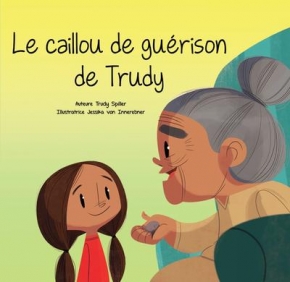 Le caillou de guérison de Trudy,
Le caillou de guérison de Trudy,
texte de Trudy Spiller; illustrations de Jessika von Innerebner.
Niveau scolaire (Grade level): Préscolaire – 1 (PreK-1)
Trudy Spiller est membre de la Nation Gitxsan de la Colombie-Britannique et appartient à la maison de Gwininitxw du clan du loup. Lugaganowals, le nom traditionnel de Trudy, signifie « une grenouille qui prend toujours appui ou qui donne toujours ». Trudy aide les familles à grandir et à se nourrir en partageant ses connaissances de la médecine, de la nourriture, de l’habillement et des pratiques autochtones.
texte de(titiraqtuq/writer) France Paquin; illustrations de(titiqtugaqtuq/illustrator) Julie Rémillard-Bélanger; traduction en inuttitut de Sarah Beaulne.
Niveau scolaire (Grade level): 1 – 3
Présentation élémentaire des principaux spécimens de la faune arctique, du lemming à l’homme, excluant la faune aquatique. — De gentilles aquarelles. Peu d’informations. Un point marquant, le texte dans les deux langues.
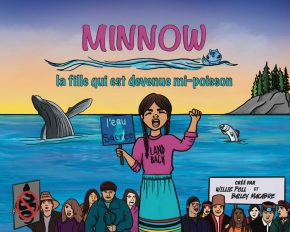 Minnow: la fille qui est devenue mi-poisson
Minnow: la fille qui est devenue mi-poisson
texte de (writer) Willie Poll; illustrations de (illustrator) Bailey Macabre.
Niveau scolaire (Grade level): 1 – 5
“Minnow, une jeune autochtone, protectrice des eaux, entreprend un voyage sous l’eau où elle en apprend de notre famille qui vit dans l’océan. Quand elle retourne à la surface, elle rassemble sa communauté pour aider à apporter des changements. Cette histoire est racontée en rimes lyriques et aide les enfants à mieux respecter les gens qui protègent les eaux et les terres autochtones, l’environnement et le monde qui les entoure. Elle aide à faire découvrir l’activisme aux enfants tôt dans leur vie.”
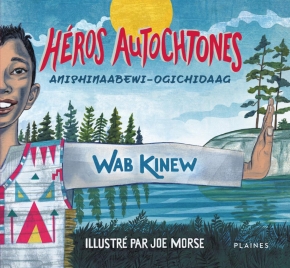 Héros autochtones/Anishinaabewi-Ogichidaag,
Héros autochtones/Anishinaabewi-Ogichidaag,
Les langues(Languages):Anishinaabe and French
texte de (writer) Wab Kinew; illustrations de (illustrator) Joe Morse
Niveau scolaire (Grade level): Kindergarten – 5
Souhaitant faire connaitre aux jeunes de tous les horizons ses héros autochtones, Wab Kinew a composé des textes inspirants mettant en vedette des héros autochtones du Canada et des États-Unis. Malgré leur expérience unique, tous ont ceci en commun : la confiance en soi et un lien avec le territoire.
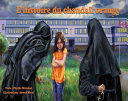 L’histoire du chandail orange,
L’histoire du chandail orange,
texte de Phyllis Webstad, illustrations de Brock Nicol, traduction de Textualis
Niveau scolaire (Grade level): 2 – 5
Lorsque Phyllis Webstad (née Jack) a eu six ans, elle est allée au pensionnat pour la première fois. Pour sa première journée d’école, elle portait un chandail orange tout neuf que sa grand-mère lui avait acheté. À son arrivée à l’école, on le lui a enlevé, pour ne jamais le lui redonner. Voici la vraie histoire de Phyllis et de son chandail orange.
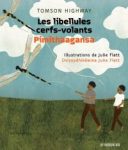
Pimithaagansa/Les libellules cerfs-volant,
texte de Tomson Highway; illustrations de Julie Flett
Niveau scolaire (Grade level): 1 – 3
Que ferais-tu n’avais aucun jouet, aucun jeu et aucun appareil electronique avec lesquels t’amuser? Est-ce que tu trouverais le temps long? Les freres Joe et Cody font tout sauf s’eenuyer. Ils inventent, creent et suivent leurs reves et ne s’ennuient jamais. Il suffit d’imaginer!
texte de Melanie Florence, illustrations de Gabrielle Grimard, texte français de Isabelle Allard
Niveau scolaire (Grade level): 1 – 4
Curieuse d’en savoir davantage sur ses origines, une petite fille demande à son grand-père de prononcer un mot en langue crie. Celui-ci est attristé lorsqu’il réalise qu’il l’a oublié, conséquence de nombreuses années passées en école résidentielle. Il lui dit qu’il a «perdu les mots»; lors de son passage là-bas, et elle décide donc de l’aider à les retrouver.
 La roue médicinale : la danse des cerceaux racontée,
La roue médicinale : la danse des cerceaux racontée,
texte de Teddy Anderson, illustrations de Jessika von Innerebner
Niveau scolaire (Grade level): Kindergarten – 3
La danse des cerceaux et la roue médicinale sont de puissants symboles d’unité, de coopération et d’harmonie. Lors de ses représentations aux quatre coins de la planète, Teddy Anderson présente ces symboles comme des prismes au travers desquels jeunes et moins jeunes peuvent examiner le passé et prévoir l’avenir.
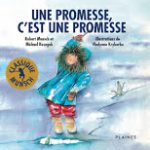 Une promesse, c’est une promesse,
Une promesse, c’est une promesse,
texte de Robert Munsch et Michael Kusugak, illustrations de Vladyana Kryorka, texte français de Carole Freynet-Gagné
Niveau scolaire (Grade level): Kindergarten – 3
La petite Allashua ne croit pas en l’existence des Qallupilluits, ces créatures similaires aux trolls qui, aux dires de sa maman, capturent les enfants qui s’approchent seuls des crevasses de glace. La voilà donc qui décide d’outrepasser la promesse qu’elle a faite à ses parents en allant pêcher seule au bord de l’océan. Quelques instants plus tard, elle est capturée par les Qallupilluits, qui l’entraînent dans leur royaume, sous les glaces océanes.
Trouver d’autres ressources
Voici quelques conseils pour trouver d’autres ressources dans ce domaine :
- Sur la page principale du site de la bibliothèque de l’UBC, utilisez la boîte de recherche générale pour rechercher des matériaux à travers toutes les succursales de la bibliothèque de l’UBC.
- Pour limiter vos résultats aux matériels disponibles à la Bibliothèque de l’éducation, visitez le site web de la Bibliothèque de l’éducation et effectuez une recherche à l’aide de la case “Search Education Resources” située dans la bande à gauche de l’écran.
- Remarque : les ressources étant principalement cataloguées en anglais, les termes ci-dessous donnent généralement plus de résultats que les recherches effectuées en français. Vous pouvez filtrer votre liste de résultats par langue dans la barre latérale de gauche.
- Utilisez des termes de recherche spécifiques, tels que
- “pensionnat indien”, “First Nations”, “Indigenous”, “Aboriginal”, “Indians of North America”, “Musqueam” (or any nation).
- Pour trouver des plans de cours, incluez “lesson plans”, “lesson planning”, or “activity programs” dans vos termes de recherche.
Finding More Resources
To find more resources in this area, try the following:
- Search using the General tab on the UBC Library website to look for material in all UBC Library branches.
- Search using “Search Education Resources” box in the left hand bar on the Education Library website to limit your results to physical materials in the Education Library.
- Use specific search terms, such as
- “pensionnat indien”, “First Nations”, “Indigenous”, “Aboriginal”, “Indians of North America”, “Musqueam” (or any nation).
- To find lesson plans, include “lesson plans”, “lesson planning”, or “activity programs” in your search terms.
For more help with searching, please visit the Library Service Desk or e-mail ed.lib@ubc.ca.
